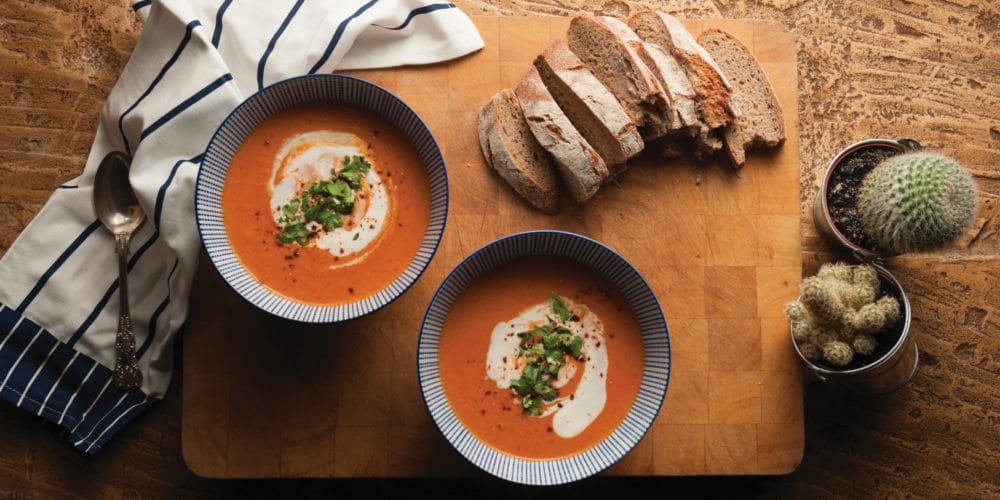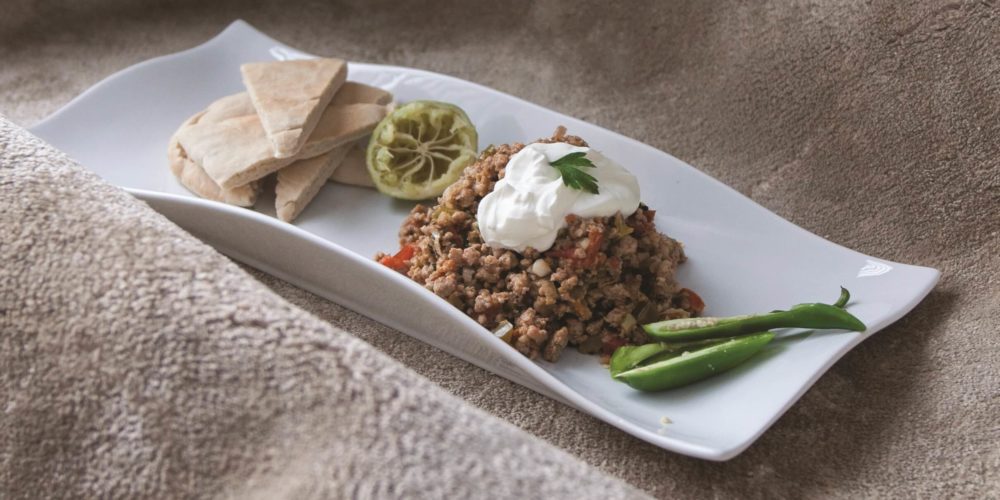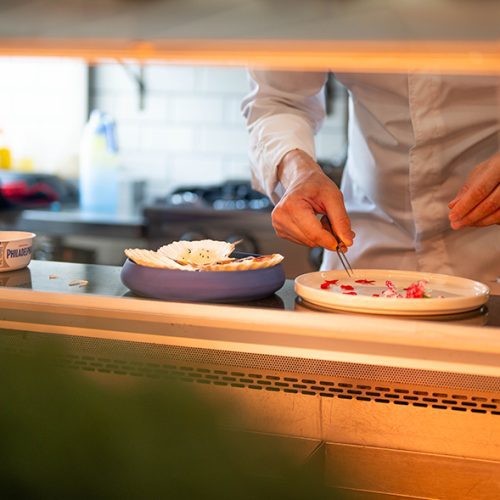
As evidence grows that this slow-fermented bread may be easier to digest, Served joined a Sourdough Masterclass organised by Sass Woods, fitMaltamums.com, and led Julia Ripard to see how it’s really made.
Sourdough breads use a fermented batter-like dough starter to make them rise and enhance their flavour. A portion of the sourdough starter is mixed with the bread’s ingredients, while the remainder is kept and ‘fed’ with more flour and water to use in future loaves
Ingredients for a standard loaf
50g Leaven (Active sourdough starter ‘fed’ approx. 12 hours before)
300ml purified water (+25ml to add with the salt)
250g Dove’s Farm strong white bread flour
250g Dove’s Farm whole meal flour
10g salt
(I like to add a variety of seeds, including fennel seed – add at the later stretch and fold stages)
Method and Timings
8pm: The night before (Approx. 12 hours):
Take a tablespoon of your sourdough starter and feed with 50g strong white bread flour and 50g water (this is your leaven that will be added to form the dough). Leave out at room temperature, covered loosely in clingfilm.
8am: (8 – 12 hours later)
Test that the leaven is ready to be used with the ‘float test’. Put a teaspoon of the starter in a cup of water – if it floats, it’s ready to be used. Fill your mixing bowl with 300ml room temperature, purified water. Add 50g of you leaven – keep the rest as your starter for next time, top up with a tablespoon of flour and water and store in a jar in the fridge, covered with clingfilm. Stir the leaven in the water to dissolve. Add your flour to the liquid. Mix with a spoon or hands until fully combined, clean the sides of the bowl with your hand to not leave too much dough stuck to the sides. Leave for half an hour.

8.30am:
Add the salt with the remaining 50g of water. With your hand, mix in to combine the salt fully.
Grab the dough and squeeze, repeat for a few minutes. Make your first round of the Stretch and Fold (S&F) method. In the same bowl, grab one side of the dough, pull upwards and fold it over. Turn the bowl slightly and grab the next bit of dough to repeat the same action until you have gone around the circumference of the dough (about 4/5 folds). Leave the dough in the bowl covered with a dishcloth or loosely with clingfilm
9am:
2nd round of stretch and fold.
9.30am:
3rd round of stretch and fold
10am:
4th round of stretch and fold

10.30am:
5th round of stretch and fold. Bubbles with be forming in the dough, become gentler with your stretching so as not to deflate the dough too much.
11am:
Do the final stretch and fold, lightly flour the edges of the dough to easily remove it from the bowl and drop onto a flourless surface.
Sprinkle a small amount of flour onto the top of the dough – with your dough scraper, scoop up and flip the dough upside down, onto the floured side. Gently pull the dough from the top, bottom and sides to stretch it out slightly. Now fold like a parcel, starting from the top – pull and fold towards you, from the left, right and finally from the bottom, and fold over to complete the ‘parcel’. Flip the folded dough again and shape with floured hands to form a tight round ball. Leave to rest on the bench for half an hour
11.30am:
Flour the top if needs be, flip upside down and repeat the same folding process from the previous stage. Drop into your proving basket, folded side facing up, onto a floured dishcloth. Fold the sides of the dishcloth over to cover and leave for 3-4 hours.
3pm:
Preheat the oven to max. around 250 degrees Celsius with your baking pot in there to heat up too.
When the pot is piping hot and the oven has heated up enough, take the pot out, and keep the oven closed to retain the heat, while you transfer the dough into your pot. First lightly flour the pot so that the bread doesn’t stick. The folded side of the dough, the side that should be facing up, needs to be facing down in the pot. So, flip the dough over into your pot, as smoothly as possible. Now you need to score the top of the loaf with a blade or very sharp knife. Any style is good, I go for a square shaped cut round the top of the loaf, cutting at roughly a 45-degree angle. This allows the bread to expand during baking.
Now cover the pot, place in the oven, and bake for 20 minutes covered, and 20 minutes uncovered. If the bread hasn’t got a nice, dark, golden brown crust – leave it in until it has.
Once it’s done, carefully take the bread out of the pot and leave to cool on a cooling rack.
If you can resist, it’s best to leave the bread at least for an hour to cool down before cutting into it.











